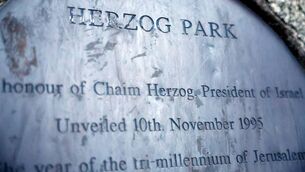Visitors thrive on our hospitality
It used to be thin on the ground in Ireland. Up to the 1970s there were none at all west of the Shannon and, even in eastern counties, the jerky low-pitched warble was not a common sound. I remember vividly the first time I caught one. It had blundered into my mist net in a North Dublin orchard. The celebrity was removed from the net with great care but my inexperienced hands shook with excitement and the bird escaped before I had ringed it. That was over 30 years ago. By then, blackcap numbers were increasing. Soon, the distinctive song could be heard in broad-leaved woods almost everywhere and some blackcaps were spending the winter here.
This elegant soberly-attired bird can be difficult to spot in the mature woods where it nests. About the size of a sparrow, the adult male wears a black skullcap. Females and juveniles have brown ones. The rest of the plumage is pale brownish grey. Everybody assumed the blackcaps which began wintering in Ireland were local breeders or youngsters which had fledged here during the previous season. However, as more birds were ringed, a strange pattern began to emerge. Those ringed in Britain and Ireland in summer were found later in France, Spain and North Africa but not here. But if our wintering birds weren’t locals, where were they from? Then birds ringed in central Europe began turning up. As more rings were recovered, it became evident that many of our blackcaps were German. This was an extraordinary turn of events; Ireland is not exactly a paradise for wintering songbirds. German birds with the fat resources to do so would be better advised to spend the winter in Spain. What could possibly persuade them to head for Britain and Ireland instead of the sunny south?













